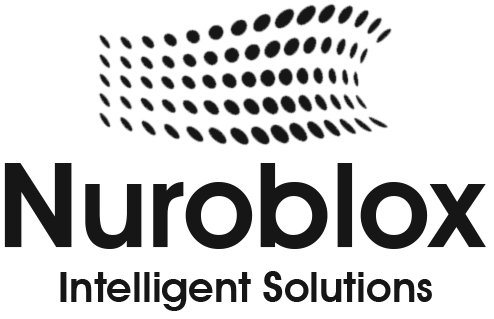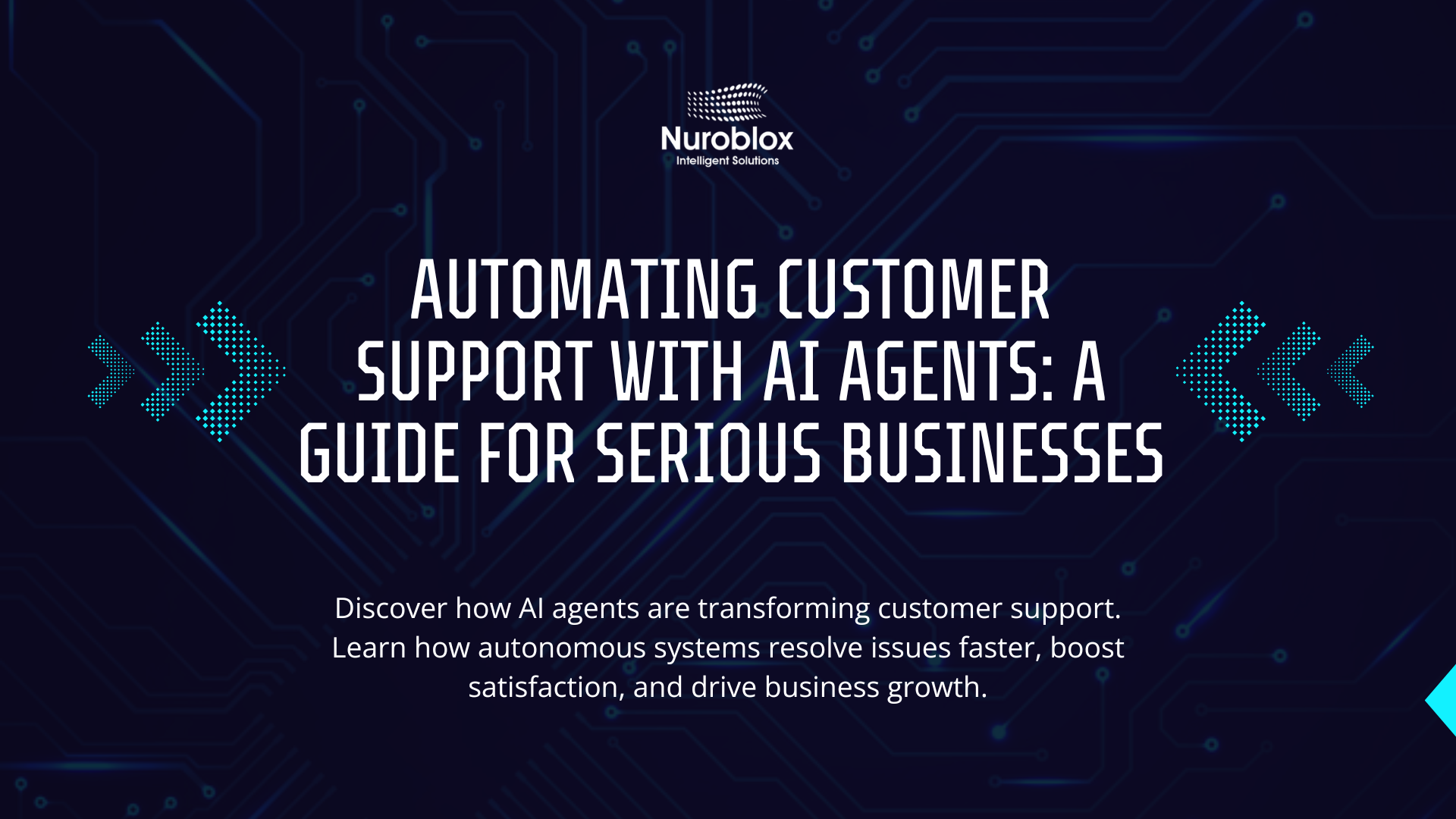Automating Customer Support with AI Agents: A Guide for Serious Businesses
In today’s competitive landscape, the quality of customer support can either be a significant growth engine or a critical point of failure. Modern customers expect instant, effective resolutions, yet many businesses are struggling to meet these demands with traditional support models. The result is a widening gap between customer expectations and business capabilities, leading to churn and operational inefficiency. Over half of all customers, 52% to be exact, will abandon a company due to slow response times, and 59% will leave after just one negative experience. The stakes have never been higher.
While chatbots were an initial step toward automation, their limitations have become clear. The future of customer service automation lies not in scripted, reactive bots, but in a new generation of autonomous AI agents. These intelligent systems don’t just provide answers; they perform tasks, navigate complex workflows, and resolve issues from end to end without human intervention. This article serves as a definitive guide for business leaders on leveraging these advanced AI agents. We will explore the evolution from basic bots to true autonomous agents, detail their most impactful use cases, quantify the substantial return on investment, and outline a strategic roadmap for implementation.
The Breaking Point for Traditional Customer Support
The long-established model of scaling customer support by adding more human agents is no longer sustainable. Businesses are facing a dual crisis- soaring customer expectations coupled with untenable operational pressures. This combination has created a perfect storm that legacy support structures are ill-equipped to handle.
The Widening Customer Expectation Gap
The digital era has fundamentally reshaped customer behavior. An overwhelming 90% of customers now expect an immediate response when they have a service query. However, the industry average response time languishes at a staggering 12 hours and 10 minutes. This disconnect is not just a minor inconvenience; it is a primary driver of customer churn. When businesses fail to provide the instant, 24/7 support that customers demand, they risk losing them to more agile competitors.
The Operational and Financial Crisis
While expectations have skyrocketed, the operational realities of running a contact center have become increasingly difficult.
- Unsustainable Costs – The cost of human-led support is substantial, with each interaction costing between $2.70 and $5.60. When escalated, these costs rise significantly. In contrast, an AI-powered interaction can cost as little as $0.50 .
- High Agent Turnover – The pressure on human agents is immense. Contact centers face an annual turnover rate of 44%, forcing companies into a constant, expensive cycle of hiring and training.
- Surging Demand – Compounding the issue, call volumes have surged by 20% since 2020, placing even greater strain on already overloaded teams.
This operational model is financially and logistically broken. Simply hiring more people to handle the increased volume is a losing strategy that leads to higher costs, diminished service quality, and employee burnout.
The Evolution to True Automation – Autonomous AI Agents
The journey of AI in customer service has seen rapid advancement, moving from simple, rigid systems to sophisticated, autonomous entities. Understanding this evolution is key to grasping the strategic advantage that modern AI agents provide.
Generation 1 – Rule-Based Bots (Circa 2015–2020)
The first wave of customer service automation came in the form of rule-based chatbots. These systems operated on rigid “if-then” logic, responding to specific keywords and following predefined decision trees. While they could handle the most basic, repetitive queries, they failed the moment a customer’s question deviated from the script, leading to frustration and frequent escalations to human agents.
Generation 2 – LLM-Powered Chatbots (Circa 2021–2024)
The advent of Large Language Models (LLMs) marked a significant leap forward. LLM-powered chatbots can understand natural language, maintain context within a conversation, and handle a much wider range of inquiries. These systems can achieve ticket deflection rates of over 60% by providing relevant information from knowledge bases and guiding users through troubleshooting steps. However, their primary function is still informational; they tell the user what to do but cannot perform the actions themselves.
Generation 3 – Autonomous AI Agents (2025 and Beyond)
The current frontier is the autonomous AI agent, a paradigm shift in automation. Unlike a chatbot that provides instructions, an autonomous agent is a piece of software that can interpret a user interface, execute clicks, fill out forms, and navigate applications to complete tasks on the user’s behalf.
For example, if a customer needs to process a return –
- A chatbot would say, “Go to your order history, select the item, and click the ‘Return’ button.”
- An autonomous agent will perform these steps for the customer, completing the return process from start to finish.
This is the critical difference between providing information and delivering a resolution. It’s a move from a conversational partner to a digital worker. The impact of this technology is projected to be immense; Gartner predicts that agentic AI will autonomously resolve 80% of common customer service issues without human intervention by 2029.
Core Use Cases for AI Agents in Enterprise Customer Support
For serious businesses, the application of autonomous AI agents goes far beyond simple FAQ automation. These agents integrate into core business processes to deliver efficiency, personalization, and reliability at scale.
End-to-End Issue Resolution
AI agents can serve as the first line of support, capable of fully resolving a high volume of common customer requests without human oversight. This includes handling tasks such as –
- Processing refunds and returns.
- Updating customer account information and preferences.
- Resetting passwords and managing account access.
- Providing real-time order status and tracking updates.
By automating these routine tasks, AI agents provide instant, 24/7 resolutions for customers while freeing up human agents to focus on more complex, high-value interactions.
Intelligent Ticket Management and Escalation
When an issue is too complex for full automation, AI agents play a crucial role as intelligent dispatchers. They can –
- Categorize and Prioritize – Automatically analyze incoming tickets to determine their urgency and subject matter.
- Intelligent Routing – Route the ticket to the human agent or department with the right expertise to handle the issue.
- Contextual Handoff – Provide the human agent with a complete summary of the customer’s issue and the steps already taken, ensuring a seamless and efficient transition without forcing the customer to repeat themselves.
Proactive and Personalized Support
Modern AI agents leverage data to transform support from a reactive function to a proactive one. By analyzing a customer’s history, purchase patterns, and browsing behavior, agents can –
- Anticipate Needs – Identify potential issues before they arise and offer solutions proactively.
- Deliver Tailored Recommendations – Suggest products, services, or help articles that are relevant to the individual customer’s needs.
- Analyze Sentiment – Use Natural Language Processing (NLP) to detect customer sentiment in real-time, allowing for a more empathetic and effective interaction.
Advanced Technical Troubleshooting
For technology, software, and telecommunications companies, AI agents can act as highly effective first-line technical support. An agent can guide a customer through structured diagnostic and troubleshooting procedures. For instance, if a customer reports an internet outage, an AI agent for an Internet Service Provider can walk them through a series of steps, such as rebooting the router and checking cable connections, to resolve the problem autonomously.
The Business Impact – Quantifying the ROI of AI Agent Implementation
The adoption of autonomous AI agents is not just about improving service; it’s a strategic investment that delivers a powerful and measurable return across the organization.
Drastic and Immediate Cost Reduction
The financial case for AI agents is compelling. Organizations that implement AI in their customer service operations report cost reductions of 20-40% . This is driven by a fundamental shift in the cost-to-serve model. Furthermore, Gartner projects that AI will drive $80 billion in labor cost savings for contact centers by 2026, highlighting the massive economic impact of this technology.
A Revolution in Team Productivity and Empowerment
By automating repetitive, low-level tasks, AI agents amplify the capabilities of human support teams. Businesses report that AI automation platforms can boost agent productivity by 20-45%. This allows organizations to handle higher support volumes without increasing headcount. More importantly, it empowers human agents to transition from handling mundane queries to resolving complex customer issues, leading to higher job satisfaction and lower rates of burnout and turnover.
Enhanced Customer Satisfaction and Long-Term Loyalty
The ultimate goal of any customer service function is to create happy, loyal customers. AI agents contribute directly to this by delivering the fast, accurate, and personalized experiences that modern consumers expect. The ability to provide instant, 24/7 support meets a critical customer demand and demonstrates a company’s commitment to service excellence. As AI continues to evolve, its impact on the customer relationship will only grow, with 59% of consumers believing that AI will fundamentally change their interactions with companies within the next two years.

Deploying autonomous AI agents requires a thoughtful, strategic approach to ensure successful adoption and maximize business impact.
- Assess Needs and Define Success Metrics – The first step is to conduct a thorough analysis of your current customer service operations. Identify the primary bottlenecks, such as high-volume ticket categories, long resolution times, or areas with low customer satisfaction scores . Based on this assessment, define clear, measurable objectives for your AI implementation. Key metrics to track include average handle time, first-contact resolution rate, ticket deflection rate, and Customer Satisfaction (CSAT) scores .
- Choose the Right AI Platform – Selecting the right technology partner is critical. Look for an enterprise-grade platform that offers more than just conversational AI. Prioritize solutions that provide true autonomous capabilities-the ability to execute tasks within your business applications . Essential features include seamless integration with your existing CRM and helpdesk systems, advanced NLP and sentiment analysis, and robust security and compliance protocols like SOC 2 and GDPR .
- Execute a Phased Rollout – Rather than a large-scale, disruptive launch, adopt a phased implementation strategy. Begin with a pilot program targeting a specific, high-volume use case, such as handling password resets or order status inquiries . This allows you to test the technology in a controlled environment, gather feedback from both customers and agents, and refine the AI’s performance before scaling.
- Commit to Continuous Training and Optimization – An AI agent is not a “set it and forget it” solution. Its performance depends on the quality and relevance of the data it is trained on. Establish a process for continuously monitoring the agent’s interactions, analyzing its performance against your defined metrics, and using those insights to retrain and optimize its models over time . This ensures the agent adapts to new products, evolving customer behaviors, and changing business processes.
The transition from reactive, human-led support to proactive, automated resolution is no longer a distant future vision; it is a present-day strategic imperative. The companies that thrive in the coming years will be those that embrace autonomous AI agents to build a more efficient, scalable, and customer-centric support operation.
As your competitors move toward automating end-to-end resolutions, is your business prepared to move beyond simply answering questions and start solving problems autonomously?


